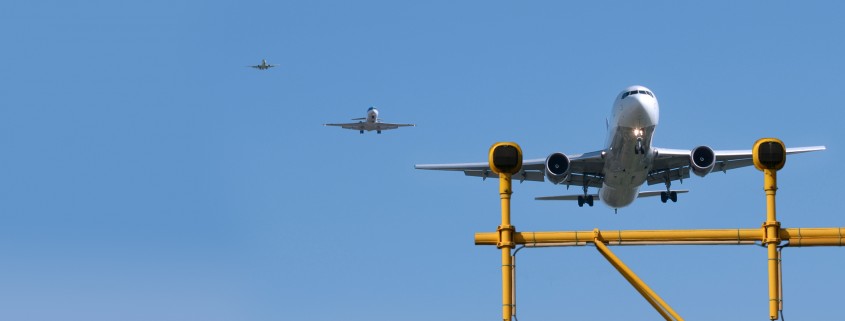Some time ago, the German air navigation service provider DFS (Deutsche Flugsicherung) set up a joint project called ‘Optimized Flying’ together with a number of its customers and partners (including Lufthansa). The project is aimed at reducing fuel consumption by optimizing the efficiency of the elevation profile during the flight. NLR supported DFS during this project by upgrading NLR’s flight analysis tool FANOMOS. Thanks to these upgrades, DFS is now able to apply a fuel consumption model and gain insight into the differences in fuel consumption between traditional approaches and so-called Continuous Descent Operations (CDOs).
The fuel consumption of aircraft depends on various factors including the type of aircraft, the engines, the load and weather conditions. The Air Traffic Control Centre also plays an important role. The shorter the route from A to B, the less fuel is needed. Fuel consumption is affected not only by the flight path in the horizontal plane, but also by the elevation profile. An aircraft uses less fuel when it can remain at cruising altitude for a longer period. In addition, the aircraft’s potential energy due to its altitude can be used for a continuous descent approach that uses less fuel. These approach procedures are collectively referred to as Continuous Descent Operations (CDOs).
For a number of German airports, DFS has made arrangements with the airlines that allow pilots to determine the descent procedure themselves. This enables them to perform the CDO independently if the air traffic volume allows. The findings of this experiment show that the new arrangements result in a substantial increase in the number of CDOs.
Subsequently, an analysis was performed of the differences in fuel consumption between CDOs and traditional approaches. Depending on the aircraft type, approx. 100 kg of fuel can be saved per flight. This adds up to major cost savings when you consider the large number of aircraft movements per year. The experiments at the airports of Munich, Hannover and Frankfurt yielded fuel savings of 20 tonnes in just one month.
NLR upgraded its flight analysis tool FANOMOS to enable the calculation of these fuel consumption figures as accurately as possible. The scope of the tool was expanded from airport level to all of Germany, which enabled the detection of domestic flights with their complete horizontal flight path and elevation profile during the climbing, cruising and descent phases.
In addition to expanding the scope, a number of functional upgrades were implemented for automatic flight phase detection. This involves automatically recognizing flight patterns, including climbing, cruising and descent as well as any level flight segments. More complex patterns like continuous descent and continuous climb profiles can also be detected. In addition, we further expanded the spatial analysis component to facilitate accurate spatial analyses of flight paths.
NLR expects that these recent upgrades for the detection of flight phases will also offer new possibilities for determining the environmental impact and efficiency of flights.
 About the author: Johan Weggemans works as an R&D Engineer for NLR’s environmental department and serves as FANOMOS DFS Project Manager. Among other activities, he is involved in research into the use of innovative solutions in aviation.
About the author: Johan Weggemans works as an R&D Engineer for NLR’s environmental department and serves as FANOMOS DFS Project Manager. Among other activities, he is involved in research into the use of innovative solutions in aviation.
Questions? If you have any questions about this blog post, please feel free to contact Johan by e-mail at Johan.Weggemans@nlr.nl or by phone on +31 (0)88 511 4463
